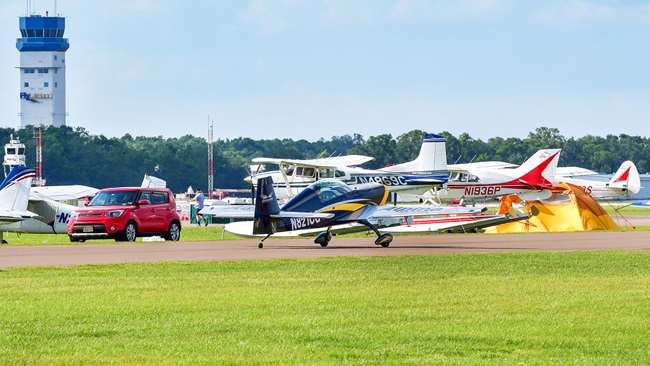AOPA publishes airport security fact sheet
AOPA has posted online a new fact sheet about airport security to help airports that must administer a Transportation Security Administration-approved security plan stay safe while allowing general aviation pilots access to aircraft parking, ramp access, and other services.
Under TSA regulations, airports must have in place a TSA-approved Airport Security Program (ASP) when scheduled airlines operating there use aircraft with 61 or more seats. The security plan may require airport management to conduct security background checks and issue identification badges to hundreds of employees and other personnel.
The new AOPA fact sheet, TSA Airport Access Security Requirements, can help airports “find a GA friendly outside-the-box solution that works for unique security needs of each airport.”
“It is important to understand that there are alternative methods that are less onerous and still meet TSA requirements, while being friendly to general aviation,” said Nobuyo Sakata, AOPA director of airport security.
Specifics of an airport’s security requirements are considered to be sensitive security information and are not publicly disclosed by the TSA. While that makes it difficult for airport users to weigh in on the impact of security planning on their needs, the AOPA fact sheet suggests approaches airport managers can take to develop their security plans through a combination of technology such as closed-circuit television, video surveillance systems, or one-time-use access codes; physical barriers such as gates between areas with different security levels; and other ways to leverage the airport’s physical layout in the security plan.
The new fact sheet provides information about the regulatory requirements and security levels of the different operating areas of an air-carrier-service airport. It discusses the kinds of access-control systems available and options for providing “identification media” to authorized persons.
Those persons include an airport’s GA pilots, who should be familiar with the local security protocols.
Transient pilots, however, lack locally issued ID, and “airports must implement specific procedures to control access to general aviation transient ramps,” the fact sheet notes, reminding airport managers that transient pilots “have a valid reason to be on a general aviation ramp,” and that they already carry valid credentials including their FAA pilot certificate and government-issued picture ID. In effect, transient pilots are “vetted by TSA on a daily basis.”
The fact sheet also provides helpful links to other resources on airport security questions.
AOPA also continues to promote the AOPA Airport Watch program and educate GA pilots to be vigilant and report suspicious activities, Sakata said. AOPA has also been working with the FAA on a revision to the Aeronautical Information Manual’s airport security section.




